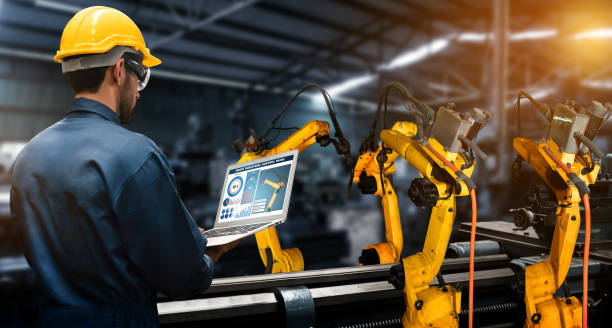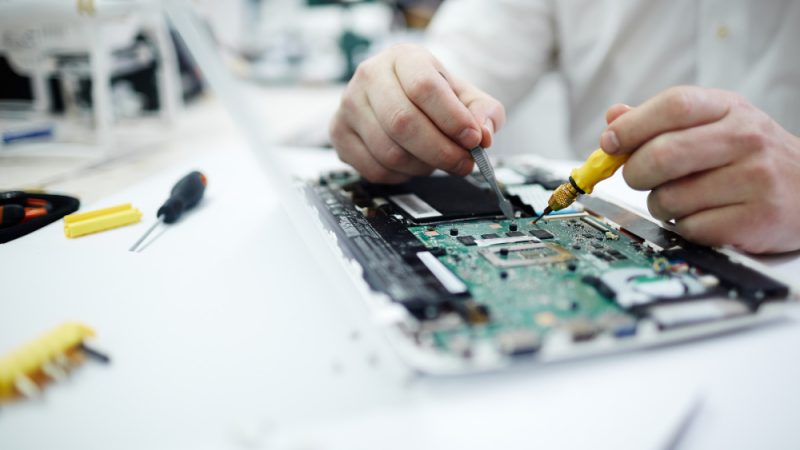3 Ways IoT Is Improving Industrial Manufacturing

The IoT revolution has changed the way organizations do businesses by helping them work smarter and achieve outstanding outcomes. And, there is no better example than observing significant changes in the industrial manufacturing sector. Manufacturers are gathering data from analytics with the help of IoT technology and streamlining their operations.
In short, IoT is improving industrial manufacturing by creating autonomous systems that deliver real-time reporting, bring important information, and improve overall efficiency. Similar to human intervention, IoT is self-driven and NetSuite consulting is a great example of the implementation of IoT in the manufacturing sector.
IoT unleashes the latest opportunities for industrial manufacturing
One of the primary challenges that prevail in the manufacturing sector is to provide unmatched services and products within the shortest possible timeframe.
That’s where IoT has been a game-changer that comes up with fresh opportunities needed by the manufacturing industries to manage downtime, increase efficiency, reduce production, and improve services.
Therefore, leveraging on self-taught algorithms, the IoT applications such as the one provided by NetSuite consulting, access wide resources and multiple data to decide upon certain things that need to be taken within minutes. With the implementation of IoT, the manufacturing process gets done with ease, thereby increasing efficiency and revenue.
1. The extent of prediction has increased
During the old days of manufacturing, the push system was popular. In that system, you have to come up with a product depending on the current demand. And, significantly push the product to relevant markets according to the demands. However, expectations from these situations might go wrong especially with the laid plans.
Hence, the next plan was to develop a pull functionality system that will fall in line with the demand situation and increase the manufacturing supply. While the so-called push and pull system was a perfect strategy from all aspects, it relies on accurate data.
And, most manufacturers took that as a challenging task because of the absence of an available platform. However, IoT influenced the integrated visible system by making sure that the push and pull system moves further. And, that was made possible by using real-time data and analytics to predict the existing demand.
Also, it helped organizations to work efficiently with the proper execution of strategies. With real-time information and analytics, the changing demands will be considered. And, a manufacturing platform will be developed to cope with the prevailing demands in the market.
2. Have control over the outsourcing
One of the ways manufacturers can lower their costs is through outsourcing and it will continue to be trending. However, outsourcing has a negative aspect in the form of the absence of control. Never forget that you are handing over your products to a third party and you don’t have a clue on how they will do it.
Quality control and guarantee of sustainable supply can cause greater issues. With IoT, it provides openness to your business processes by introducing smart gadgets in the manufacturing units that help you to speed up things in real-time.
Moreover, location data and time-stamped offers great control and visibility. That way, the products don’t get in the way of being accountable.
3. Unstable demand doesn’t hamper production anymore
These days, manufacturing becomes a challenging affair because of the volatile demand of the market. Markets tend to blow down and in most cases, certain geopolitical activities tend to interfere with commerce. Apart from that, new regions relating to production tend to grow regularly.
As a result, manufacturing companies have found out that they need to work out tirelessly to make decent profits. Long gone are the days when a company produced nice products and made huge profits out of that. In this modern era of technology, every process is important compared to the product itself.
IoT has made a remarkable entry into the industrial manufacturing sector by introducing smart processes. As such, it allows for fast process realignments and creates new demand. An example here might be useful. Suppose, imagine a quick order process in a digital industry where gadgets can interact among themselves and create products according to the demands.
The new order sets in, the gadgets evaluate their capabilities and synchronize with the other gadgets located at different places. They begin operations and start the production process without any human intervention. Also, they share the work among industries that are fully operating in different locations.
3 Ways IoT Is Improving Industrial Manufacturing
The IoT revolution has changed the way organizations do businesses by helping them work smarter and achieve outstanding outcomes. And, there is no better example than observing significant changes in the industrial manufacturing sector. Manufacturers are gathering data from analytics with the help of IoT technology and streamlining their operations.
In short, IoT is improving industrial manufacturing by creating autonomous systems that deliver real-time reporting, bring important information, and improve overall efficiency. Similar to human intervention, IoT is self-driven and NetSuite consulting is a great example of the implementation of IoT in the manufacturing sector.
IoT unleashes the latest opportunities for industrial manufacturing
One of the primary challenges that prevail in the manufacturing sector is to provide unmatched services and products within the shortest possible timeframe.
That’s where IoT has been a game-changer that comes up with fresh opportunities needed by the manufacturing industries to manage downtime, increase efficiency, reduce production, and improve services.
Therefore, leveraging on self-taught algorithms, the IoT applications such as the one provided by NetSuite consulting, access wide resources and multiple data to decide upon certain things that need to be taken within minutes. With the implementation of IoT, the manufacturing process gets done with ease, thereby increasing efficiency and revenue.
1. The extent of prediction has increased
During the old days of manufacturing, the push system was popular. In that system, you have to come up with a product depending on the current demand. And, significantly push the product to relevant markets according to the demands. However, expectations from these situations might go wrong especially with the laid plans.
Hence, the next plan was to develop a pull functionality system that will fall in line with the demand situation and increase the manufacturing supply. While the so-called push and pull system was a perfect strategy from all aspects, it relies on accurate data.
And, most manufacturers took that as a challenging task because of the absence of an available platform. However, IoT influenced the integrated visible system by making sure that the push and pull system moves further. And, that was made possible by using real-time data and analytics to predict the existing demand.
Also, it helped organizations to work efficiently with the proper execution of strategies. With real-time information and analytics, the changing demands will be considered. And, a manufacturing platform will be developed to cope with the prevailing demands in the market.
2. Have control over the outsourcing
One of the ways manufacturers can lower their costs is through outsourcing and it will continue to be trending. However, outsourcing has a negative aspect in the form of the absence of control. Never forget that you are handing over your products to a third party and you don’t have a clue on how they will do it.
Quality control and guarantee of sustainable supply can cause greater issues. With IoT, it provides openness to your business processes by introducing smart gadgets in the manufacturing units that help you to speed up things in real-time.
Moreover, location data and time-stamped offers great control and visibility. That way, the products don’t get in the way of being accountable.
3. Unstable demand doesn’t hamper production anymore
These days, manufacturing becomes a challenging affair because of the volatile demand of the market. Markets tend to blow down and in most cases, certain geopolitical activities tend to interfere with commerce. Apart from that, new regions relating to production tend to grow regularly.
As a result, manufacturing companies have found out that they need to work out tirelessly to make decent profits. Long gone are the days when a company produced nice products and made huge profits out of that. In this modern era of technology, every process is important compared to the product itself.
IoT has made a remarkable entry into the industrial manufacturing sector by introducing smart processes. As such, it allows for fast process realignments and creates new demand. An example here might be useful. Suppose, imagine a quick order process in a digital industry where gadgets can interact among themselves and create products according to the demands.
The new order sets in, the gadgets evaluate their capabilities and synchronize with the other gadgets located at different places. They begin operations and start the production process without any human intervention. Also, they share the work among industries that are fully operating in different locations.






